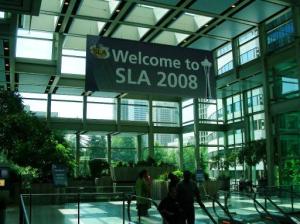An often neglected form of marketing for business is the press and PR.
In order to help with this tricky topic for newcomers the Business & IP Centre has joined forces with GMT events to provide a series of Get Noticed events.
The right mention in the right publication can have a massive impact on orders for companies of all sizes. It can attract new business partners and can even help a growing business secure funding.
The first event was held on May 22nd, attracting a full house of delegates who heard some inspirational insights into the news media and the world of PR. Delegates heard from Fleet Street journalist and chairman of Europe’s largest media training company, Keith Elliott, from Tracey Hobbs, editor of the BBC2’s Working Lunch, and Richard Tyler, enterprise editor at The Daily Telegraph.
Then the PR speakers, including Francis Ingham, (Public Relations Consultants Association),
Crispin Manners, (Kaizo), Susanna Simpson, (Limelight PR) and Michael Hayman, (The Communication Group) talked about how PR agencies operate, about word-of-mouth marketing, and about why you are your company’s biggest asset.
The next event is on July 10th an includes Phil Halliday from the Financial Times on what makes a news story for one of the world’s most trusted business newspapers.
David Lester the founder of Crimson Business will share his expertise on raising a company’s profile via business magazines.
Sally O’Sullivan, former editor-in-chief at IPC Magazines will look at how consumer and customer magazines operate and how you and your business can feature.
Paula Gardner runs Do Your Own PR, a business that teaches companies of all sizes how to use PR to create interest, keep up with and surpass the competition and generally move up to the next level.
Francis Ingham, director general of the Public Relations Consultants Association, will explain how agencies operate, how to choose the most appropriate one for you – and tell you what PR firms can and cannot do for your business.
Adrienne Routledge, founder of Sapphire PR, a specialist business-to-business public relations agency, will look at how to get the most out of a PR agency.
Kaizo CEO Crispin Manners will cover word-of-mouth marketing.
Booking details from http://www.gmtevents.co.uk/booknow.htm.
 Thanks to the Yankee In Canada (otherwise known as Daniel Lee) for producing an SLA twitter cloud for the recent conference. The cool image below was produced using Wordle, and is based on analysis of the 1,194 tweets produced during the conference.
Thanks to the Yankee In Canada (otherwise known as Daniel Lee) for producing an SLA twitter cloud for the recent conference. The cool image below was produced using Wordle, and is based on analysis of the 1,194 tweets produced during the conference.




 After the initial introductions, during which many of the attendees also revealed Sue’s positive influence over their early information careers, we got down to the serious topic of the future of the information profession. Given the current economic climate, in which services such as libraries and information departments are often the first in line for cuts, plus the more general recent trend to outsource service departments, this was not a theoretical question.
After the initial introductions, during which many of the attendees also revealed Sue’s positive influence over their early information careers, we got down to the serious topic of the future of the information profession. Given the current economic climate, in which services such as libraries and information departments are often the first in line for cuts, plus the more general recent trend to outsource service departments, this was not a theoretical question.
 Having grown up cooking with and now the owner of an
Having grown up cooking with and now the owner of an 
 their core areas of business have leapt by 75 per cent to just under £2million. Demand for the new maintenance business and tanker work has increased, bringing total turnover for 2005 to £2.5m.
their core areas of business have leapt by 75 per cent to just under £2million. Demand for the new maintenance business and tanker work has increased, bringing total turnover for 2005 to £2.5m.